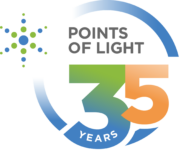THE RICHARD GILMAN GROUP
In November 2002, the Philosophy 110 Ethics class at Northwestern was challenged by their professor to develop a service project that would benefit the community. Four students read an article in the paper about the suspicious death in Zimbabwe of a local man, Richard Gilman. For the last few years, Richard Gilman, together with his brother Howard Gilman, provided aid to poor children in Africa. Zimbabwe is a country plagued by the consequences of the HIV virus. One in four people has HIV or AIDS and the average life expectancy is 36.5 years with 1200 people dying each week from complications of the disease. To complicate matters further, severe drought in Zimbabwe caused mass starvation. Richard and his brother Howard, who lives in Africa, committed to providing funds and supplies to ensure that poor children in the village of Vambumu would have an education and one nutritious meal a day. Together they had set up a ‘maa-hey-woo’ feeding program for 850 children. On his third trip in this effort, Richard Gilman was suspiciously shot and killed.
Members of the Ethics class group were moved by Mr. Gilman’s story and decided that continuing this effort would make a positive impact on their community as well as pay tribute to a true humanitarian. The class group took on the ‘Richard Gilman Group’ as their project. The Northwestern class group decided to approach the Torrington Middle School students for their help because Mr. Gilman had taught here. However, Mr. Gilman had retired several years earlier and the current students did not know him. After several contacts were made with Mr. Gilman’s widow, Mary Gilman, and the administration at the Torrington school, the Northwestern students met with the middle school Student Council and were overwhelmed by the response.
Though the middle school students did not know Mr. Gilman, they sympathized with the students in Zimbabwe whom he was trying to help. This quickly turned into a students-helping-students project. Posters, and flyers were posted in the school. The media covered the story and collection boxes were set up. The Northwestern students planned to return at the end of the week to collect the first donations. They were called in just three days because the boxes were overflowing. Hundreds of pounds of books, pencils, supplies and clothing were collected. A local business donated a computer. (One long-term hope is to have instant pen pals between the two schools.) The donations have been packed and are now stored, as are the 25 boxes of books and supplies stored at Mary Gilman’s home before her husband’s death.
The Ethics class has ended. The Richard Gilman Group continues with another challenge. Two of the Northwestern students have continued their commitment, Charles Moore and Bonnie Birden. The next challenge is raising the funds and arranging shipment so the goods will arrive at their destination and be properly distributed. Shipping fees and insurance will cost thousands of dollars. The group has investigated several agencies and options that may help with affordable shipping. An account with a non-profit status needs to be established for the group before any full-scale fundraising efforts begin. In the meantime, local organizations including the Torrington Rotary and the Eagles Club have been contacted and have indicated that they would help.
The death of Richard Gilman was a tragedy for his family and friends as well as for the children in Vambumu. Only a true community effort could attempt to continue his work. What began with four students, a class assignment and a newspaper grew to include family, students and staff at a local school, local businesses and organizations. When completed, the impact of this project started by Richard Gilman, will not only have significantly benefited his community here in Connecticut and the community in Vambumu, but will have joined these two communities through the children.
